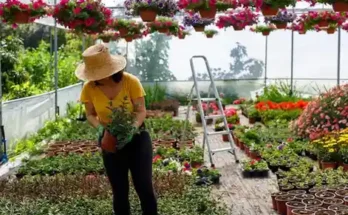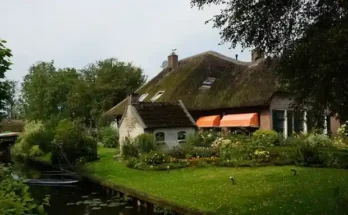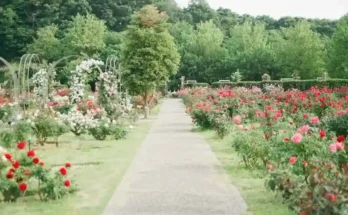At first glance, a garden may seem simple—just soil, plants, and sunlight. But to those who tend them, gardens are sacred spaces. They’re where time slows down, where life unfolds in delicate layers, and where even silence seems to bloom. A garden is not only a collection of plants. It’s a quiet dialogue between the natural world and the human heart.
Gardens have been part of human culture for millennia, and for good reason. From royal palace grounds to a single potted plant on a balcony, the act of gardening fulfills a primal, peaceful instinct. It gives us permission to connect—with nature, with ourselves, and with the rhythm of life that cannot be hurried.
The History Beneath Our Feet:
Gardens have existed for as long as human hands have worked the soil. The Hanging Gardens of Babylon, one of the Seven Wonders of the Ancient World, stood not only as a feat of architecture but as a symbol of paradise. In ancient Egypt, gardens were designed with symmetry and water features to represent cosmic order and rebirth. Meanwhile, Chinese and Japanese gardens were created as spaces for meditation, reflection, and artistic contemplation. In medieval Europe, monastery gardens offered not only herbs for healing but spiritual sanctuary. Across continents, gardens have reflected the values and dreams of the people who shaped them.
Originally, most gardens were practical. They provided food, medicine, and protection. Over time, they evolved into expressions of luxury, aesthetics, and personal retreat. In Victorian England, gardens were designed as extensions of the home—formal, elegant, and meticulously maintained. But in the modern world, the garden has come full circle. While still a place of beauty, it’s also returning to its utilitarian roots—serving as food sources, pollinator havens, and sustainable ecosystems in an increasingly urbanized society.
Designing a Space for More Than Beauty:
-
Every Garden Tells a Story
Whether wild and whimsical or trimmed and tidy, gardens carry the fingerprints of their creators. Some are bursting with colors and textures, while others are carefully curated in serene monochromes. Some invite bees and birds, while others provide vegetables for family meals.
Each plant, path, and pot holds purpose—sometimes visible, sometimes spiritual. Maybe that rosemary bush was planted in honor of a grandmother. Perhaps the trellis was built during a difficult year, each vine a step forward. Gardens grow memories as much as they grow greenery.
-
Urban Gardens and Tiny Paradises
You don’t need sprawling land to create a garden. In fact, some of the most magical gardens exist in small corners—a rooftop in Brooklyn, a balcony in Mumbai, a community plot in downtown London. These urban oases prove that green spaces are not limited by size, but by imagination.
Container gardens, vertical gardens, and hydroponic systems allow even the most crowded cities to bloom. And in doing so, they bring life and serenity back into concrete jungles.
The Futures of Food and Flowers:
-
The Power of Growing Your Own Food
There’s a quiet rebellion in planting your own food. In a world dominated by supermarkets and supply chains, growing a tomato or a sprig of mint feels radical—and deeply rewarding. It reconnects us with where nourishment comes from and makes us more conscious of what we consume.
Beyond health benefits, edible gardens foster responsibility and self-reliance. Watching food grow from seed to plate is a cycle that nourishes both body and spirit. It also introduces younger generations to sustainable living and the joy of homegrown meals.
-
The Beauty of Flowers and Seasonal Blooms
Not all gardens need to feed us physically. Some are meant to feed our eyes, our senses, and our souls. Flowers—whether wild or carefully selected—add seasonal punctuation to life. Spring’s tulips are hopeful and soft, summer’s sunflowers bold and unapologetic. Autumn’s chrysanthemums whisper of endings, while winter’s evergreens promise endurance.
Gardens give us the opportunity to witness change not as loss, but as transformation.
Gardens and the Future of the Planet:
-
Sustainability Starts in the Soil
Modern gardens are no longer just personal sanctuaries—they are part of a global movement. From composting to rainwater harvesting, gardens are becoming laboratories of sustainability. Planting native species, reducing pesticides, and supporting biodiversity all contribute to healthier ecosystems.
Pollinator gardens are especially vital today. Bees, butterflies, and birds rely on flowering plants, and in return, they keep our crops and wild flora alive. Gardening with intention can help restore what urban sprawl and industrial agriculture have taken.
-
Teaching Stewardship Through Seeds
Every seed planted is a statement of hope. By introducing children to gardening, we plant values as well—patience, responsibility, curiosity, and respect for life. Community gardens and schoolyard projects are increasingly being used as educational tools, teaching kids not only how to grow plants but how to grow as people.
Gardens teach us to be caretakers, not just consumers.
The Human Connection to Growing Things:
There’s something transformative about placing your hands in dirt. Science now confirms what gardeners have long known—gardening reduces stress, anxiety, and even symptoms of depression. The act of caring for plants releases dopamine, boosts mood, and connects us with a natural rhythm often lost in digital life. In a world of immediate gratification, a garden teaches patience. Seeds don’t bloom overnight. They ask for attention, intention, and trust. And as the garden grows, so do we.
The state of a garden often reflects the state of its keeper. A flourishing garden suggests balance and joy. A neglected one may whisper of overwhelm or sorrow. But the most powerful truth is this: no matter how withered a garden may become, it can always be revived. In this way, a garden offers a gentle metaphor for life. It reminds us that healing takes time, that growth is never linear, and that even in dormancy, beauty is waiting beneath the surface.
Conclusion:
Gardens are more than green spaces. They are sacred grounds where the human spirit dances with the rhythm of nature. They are spaces of creation, resilience, rest, and revival. From backyard beds to balcony boxes, every garden is a quiet declaration: life, in all its forms, is worth nurturing.
So dig your fingers into the earth. Plant something. Watch it grow. Let your garden become your haven, your canvas, your teacher. In tending to it, you just might discover you’re tending to yourself.




